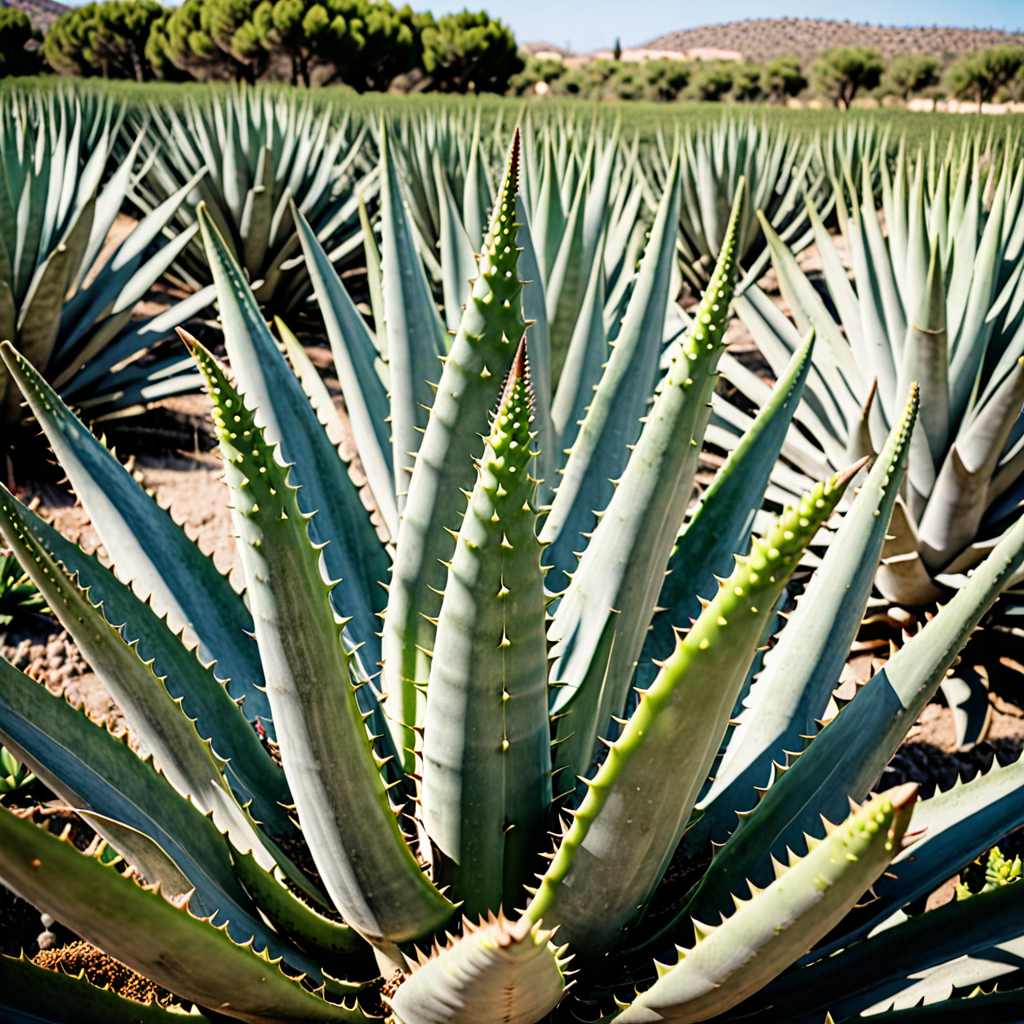Main Properties of Aloe

Frequently the aloe plants are cultivated as ornamental plants. But the main wild or commercial cultivated aloe species, used basically in the pharmaceutical, cosmetic, beauty, toiletry, food and beverages industries are the following:
- Aloe Vera (Barbadensis miller)
- Aloe Saponaria
- Aloe Arborescens Miller
- Aloe Ferox
- Aloe Perryi (Socotra)
- Aloe Chinensis
- Aloe Turkanensis
- Aloe Secundiflora
Human use of Aloes are primarily as a herbal remedy in alternative medicines and “home first aid”. It is very common to have an aloe plant in your garden or inside your house, usually in the kitchen. Both the translucent inner pulp (inner aloe gel) as well as the resinous yellow exudate known as aloe bitter or aloe sap, are used externally to relieve skin discomforts and internally as a laxative.
To date, much research has shown aloe having different positive medicinal benefits for external and internal uses. In the research section of this site we offer extensive information about that.
In the United States and United Kingdom, the Aloe vera has been and is yet the most studied and used variety; whereas in Japan and the Far East the Aloe arborescens miller, the Aloe Chinensis and the Aloe saponaria are also relevant. Most plantations of Aloe ferox are located in Southern Africa.
The more used part of the aloe plants are their leaves and in particular their internal products. Most abundant of them is a gelatinous yellowish colorless transparent gel.
The aloe gel is liquid, transparent and a colorless one composed mainly by water in approximately a 98% of its weight. The remaining 2% of weight, that it would obtain by elimination of the water, are a complex mixture of chemical substances, some of which already isolated and have been identified, knowing its farmacological and cosmetological effects.
This main element of the Aloe plant is a thick and mucilaginous gel. Externally, it can be applied directly to any number of skin complaints such as burns, rashes, cuts, acne, stings and cold sores.
Aloe gel can also provide instant relief from sunburn and will eliminate blemishes caused by over-exposure to the sun when used over a prolonged period of time. It will also greatly reduce scarring and other unsightly damaged skin tissue.
It works by penetrating the injured tissue, reducing inflammation, relieving pain and dilating capillaries to increase the blood flow to the wound. It has an intriguing, and effective, mix of antibiotic, astringent, coagulating, pain inhibiting and cell growth stimulating properties. It has been cited as a possible preventative of the aging effect, though this could be down to its intense moisturising qualities.
For that reasons, it is highly used in many cosmetic and beauty preparations. Internally, aloe juices made from aloe gel without aloe sap or aloin, are to help to the digestive system, with indigestion, heartburn, ulcers, heart system and the immune system.
There is also a bitter yellow juice that is produced in the thick leaf epidermis of the plant which is used, often in conjunction with the gel and other natural remedies, for the treatment of internal ailments.
The products made from the extracts of Aloe Vera (usually called aloe sap, aloe blood, aloin or acibar in spanish) are aimed to cure the constipation and indigestion. The processed aloin is also reported to help with arthritis, asthma, insomnia and haemorrhoids.
Taking Aloe extract (aloe yellow sap) internally must be done with care and, under professional advice because it may lead to abdominal pain and other digestive disorders.
Pregnant women and lactating mothers should always seek advice as the plant stimulates the uterus (which can bring on premature labour) and may cause gastrointestinal upsets in young babies.
At the present time they are numerous scientific works related to the aloes and their products. In the United States from 1950 to date, close to 200 Patents of Invention covering from aloe processing to new aloe derived industrial products have been registered, for medicines, cosmetics, foods, as much for its application in humans like for animals and vegetables.
External Uses
For medicinal purposes, aloe vera is most commonly used externally to treat various skin conditions, and burns. Not only does it soothe the skin, ease pain and reduce inflammation, studies have been done to show that using aloe as a topical treatment to burns will help speed up the healing recovery process.
A study performed in the 1990s showed that the healing of a moderate severe burn was sped up by six days when covering the wound on a regular basis with aloe vera gel, compared to the healing of the wound covered in a gauze bandage (Farrar, 2005).
Aloe vera helps burns of various degrees, including sunburn. When the gel is rubbed over over-exposed skin, the redness will disappear within a couple of days, and it helps to preserve moisture so that the skin will not become dry and peel. A cut leaf from an aloe vera plant can be rubbed over the skin, as it exudes gel; the gel can also be bought in drugstores.
Aloe vera can also be used to treat minor cuts and scrapes. Rubbing a cut leaf over a cut will help prevent infection and will speed up the healing response from the body. The aloe vera acts as a sealant and pulls the skin back together like a bandage or a suture.
Although aloe should not be used as a substitute for medical treatment, its many uses are beneficial and should be considered for anything such as an everyday moisturizer to a first-aid antiseptic. In addition to the above-mentioned benefits, continuous research is being done to learn how else the aloe vera plant can play an important part in human lives.
Many cosmetic companies are now adding aloe to every product possible including makeup, soaps, sunscreens, shampoos and lotions, as well as any product that is created to soothe, protect and moisturize the skin.
This is due partially to the fact that Aloe extract is full of vitamins, nutrients and minerals, as well as, the perception of the general public of Aloe as a healing ingredient.
The International Aloe Science Council advises choosing products that contain between twenty-five and forty percent aloe in them to receive the ultimate aloe vera benefits to the skin.
Aloe gel is also useful for any dry skin condition, especially eczema around the eyes and sensitive facial skin, and for treating fungal infections such as ringworm.
In Ayurvedic medicine, the gel is usually applied fresh and can even be converted into an ointment for long-term use.
